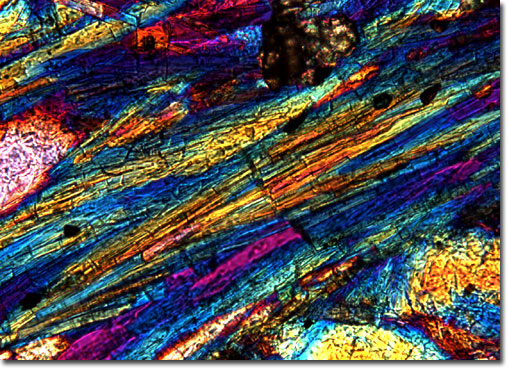|
Glaucophane only occurs in certain rocks, such as schist, marble, and eclogite, and is generally formed in a highly metamorphic zone known to geologists by the term blueschist facies. The typical location of blueschist facies is along continental margins affected by shifting of oceanic plates and in areas of high volcanic and seismic activity. Some of the best-known examples of blueschist facies in the world are found in Japan, California, the Mediterranean, and the Alps. These large, beautiful collections of metamorphic rocks gain their moniker from the bluish hue of glaucophane, but also commonly contain jadeite, garnet, muscovite, quartz, lawsonite, and other minerals.
|
